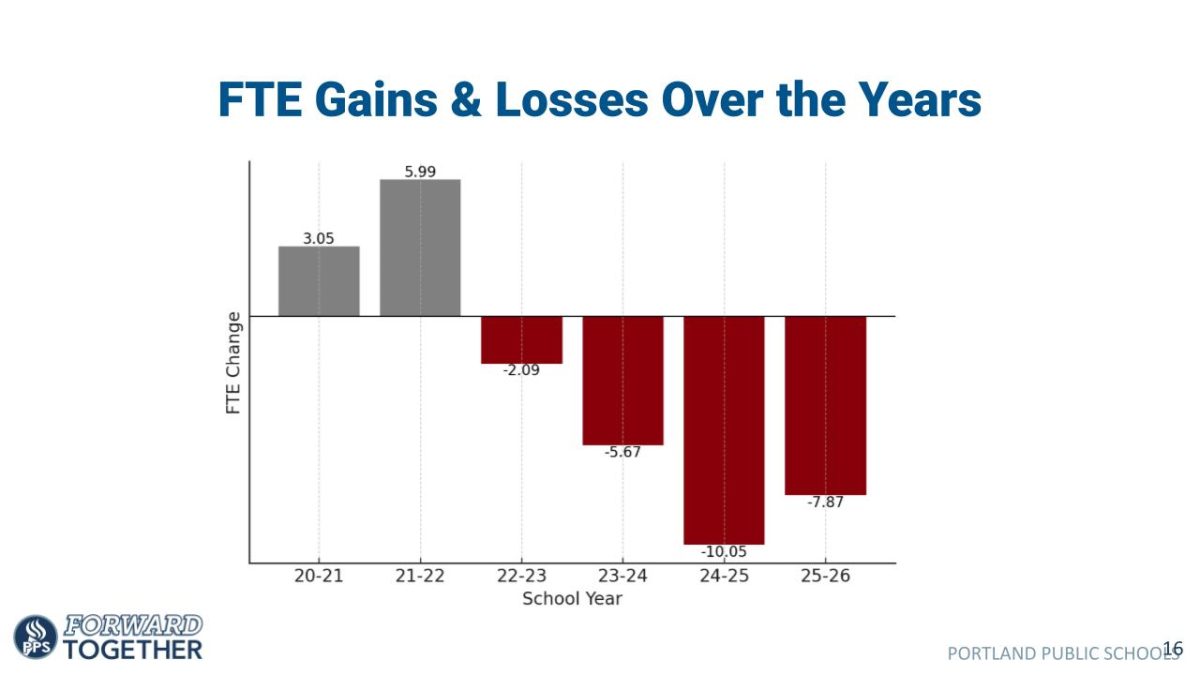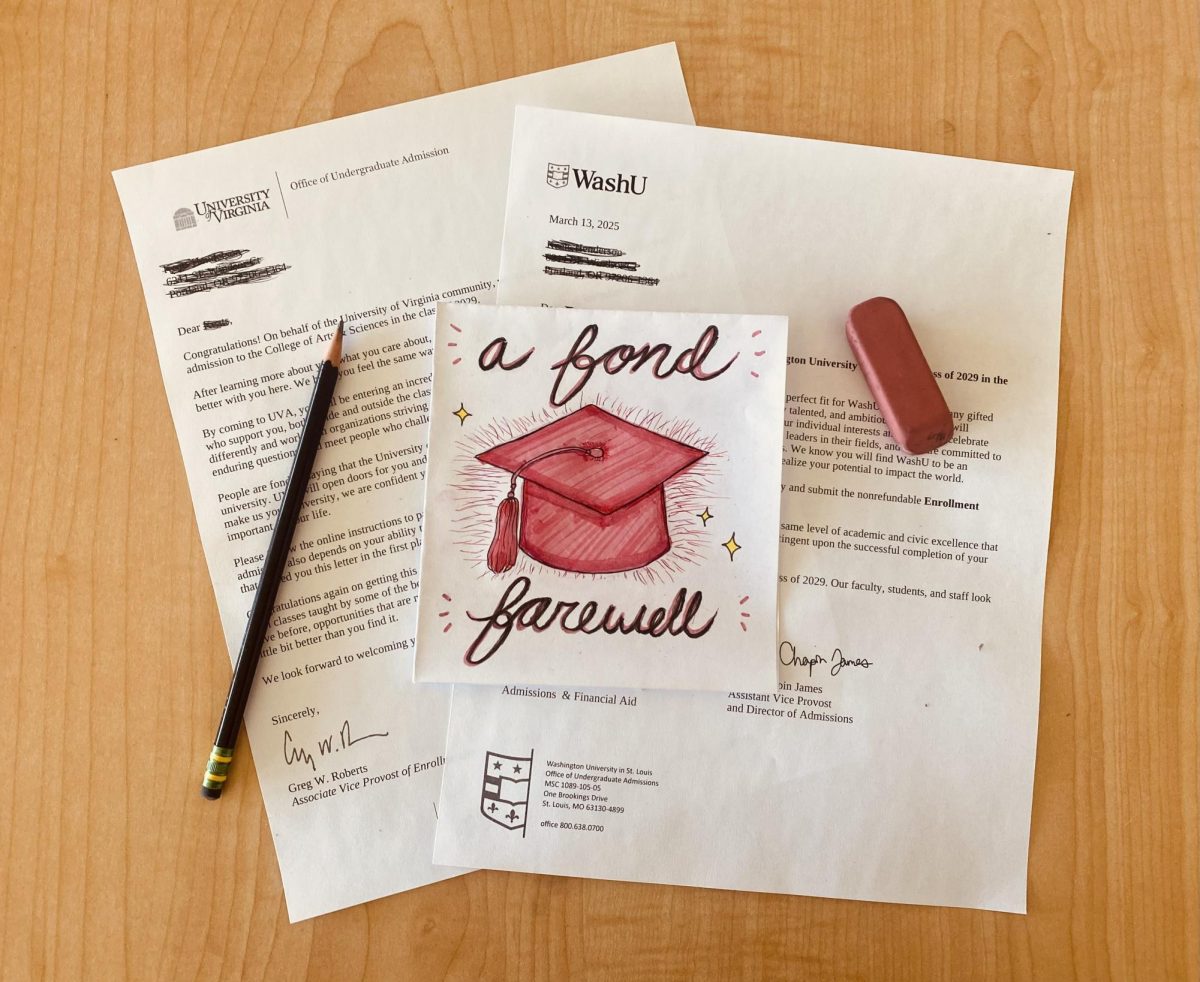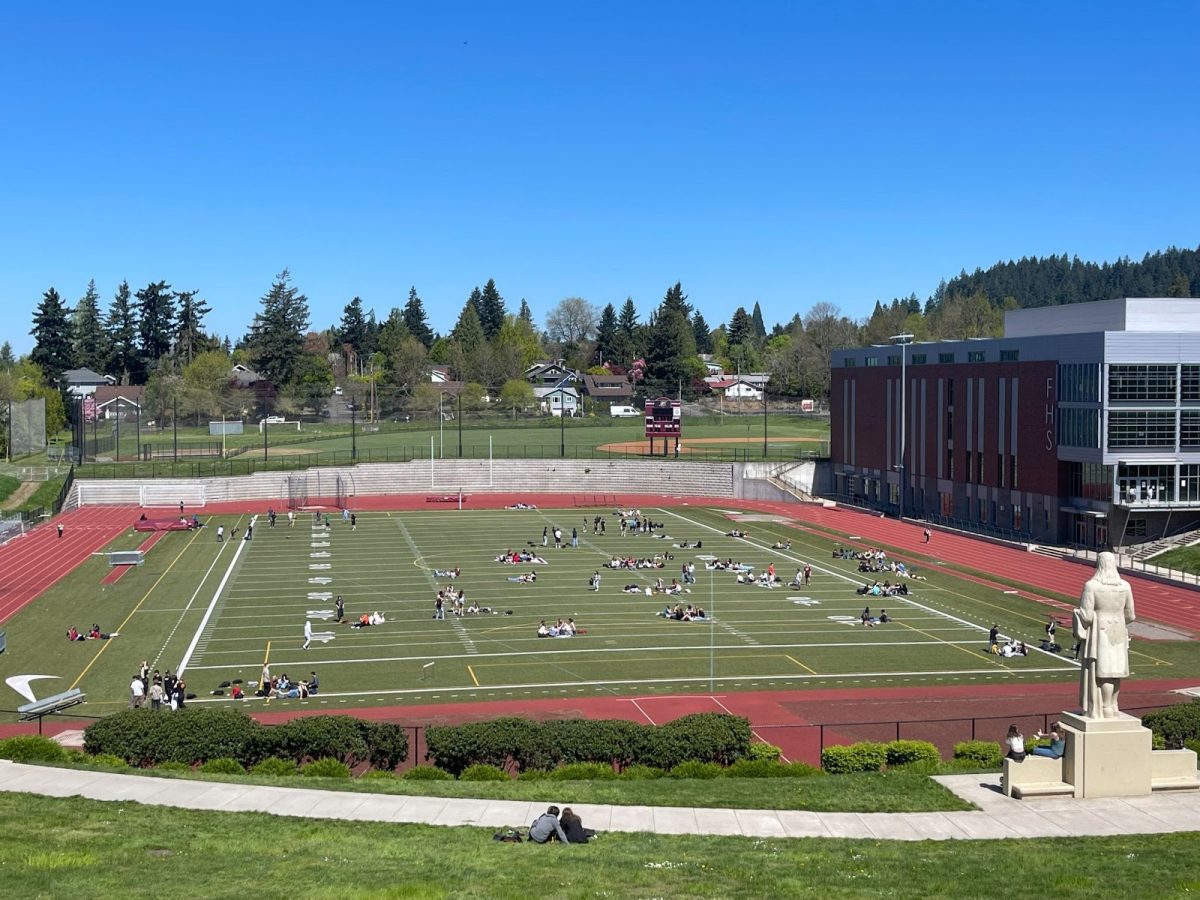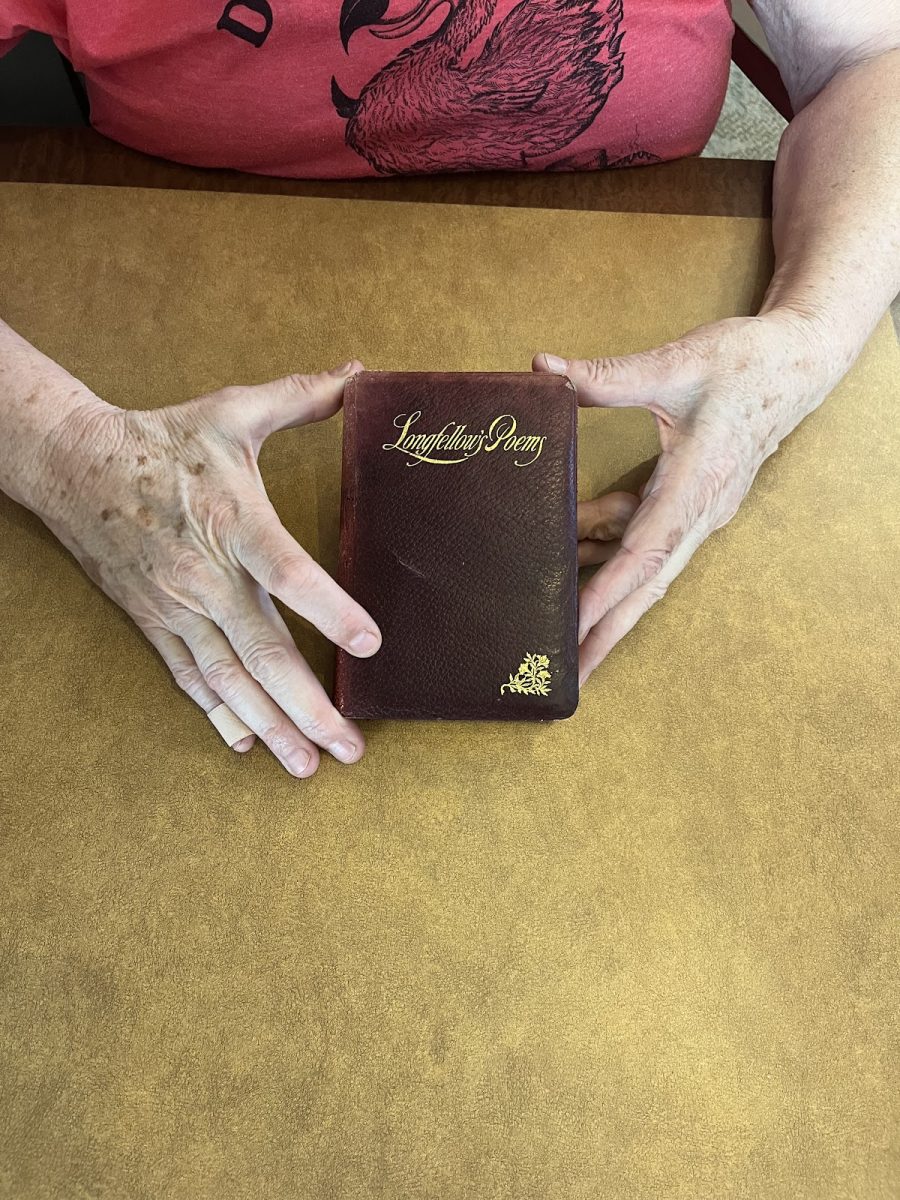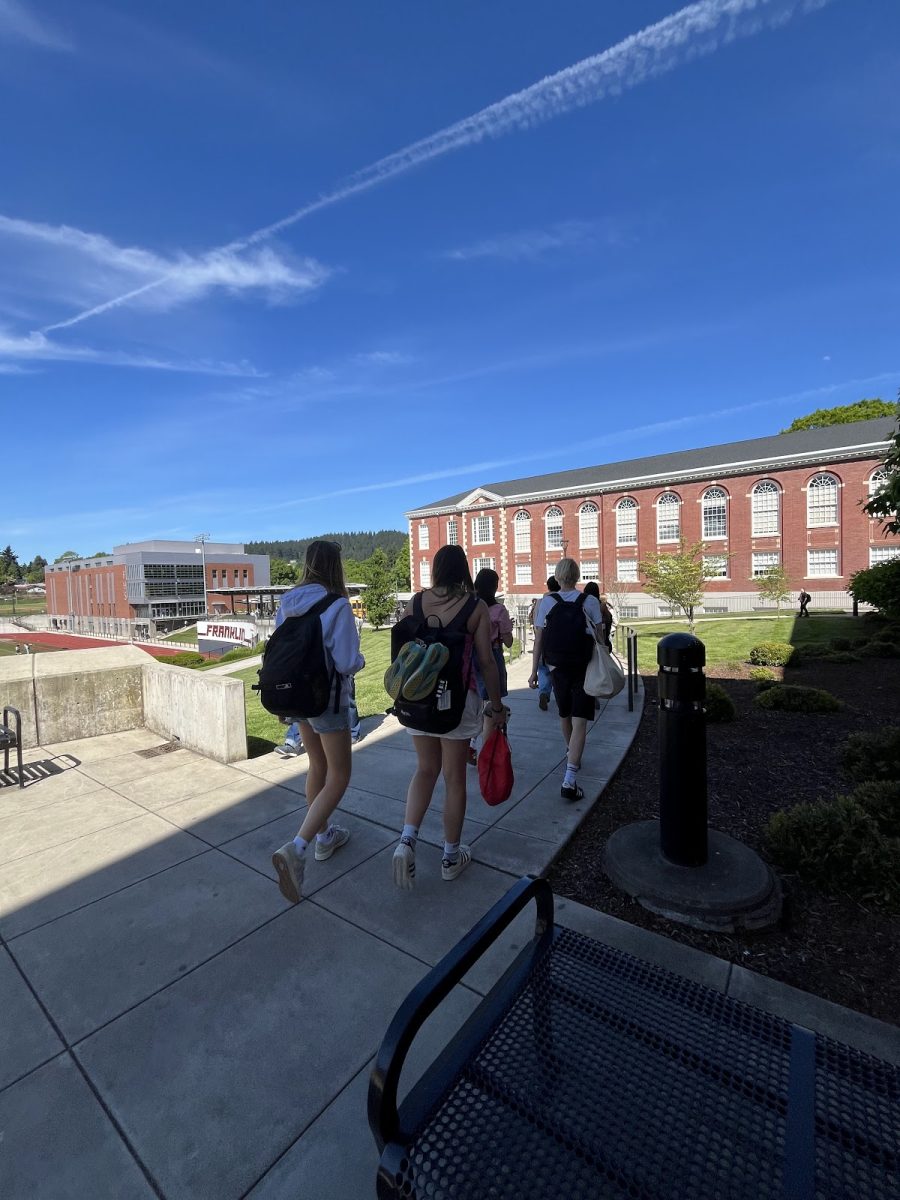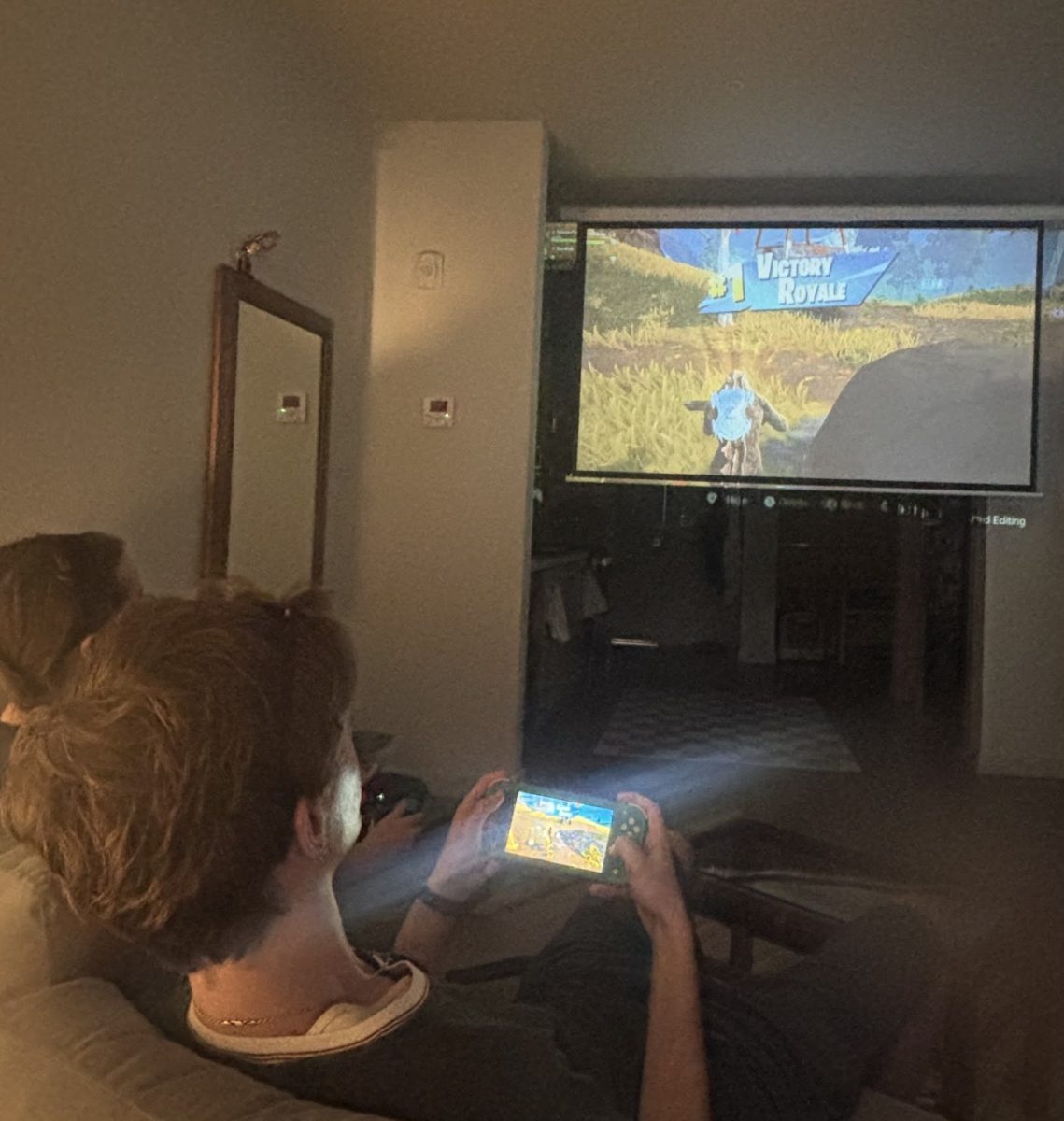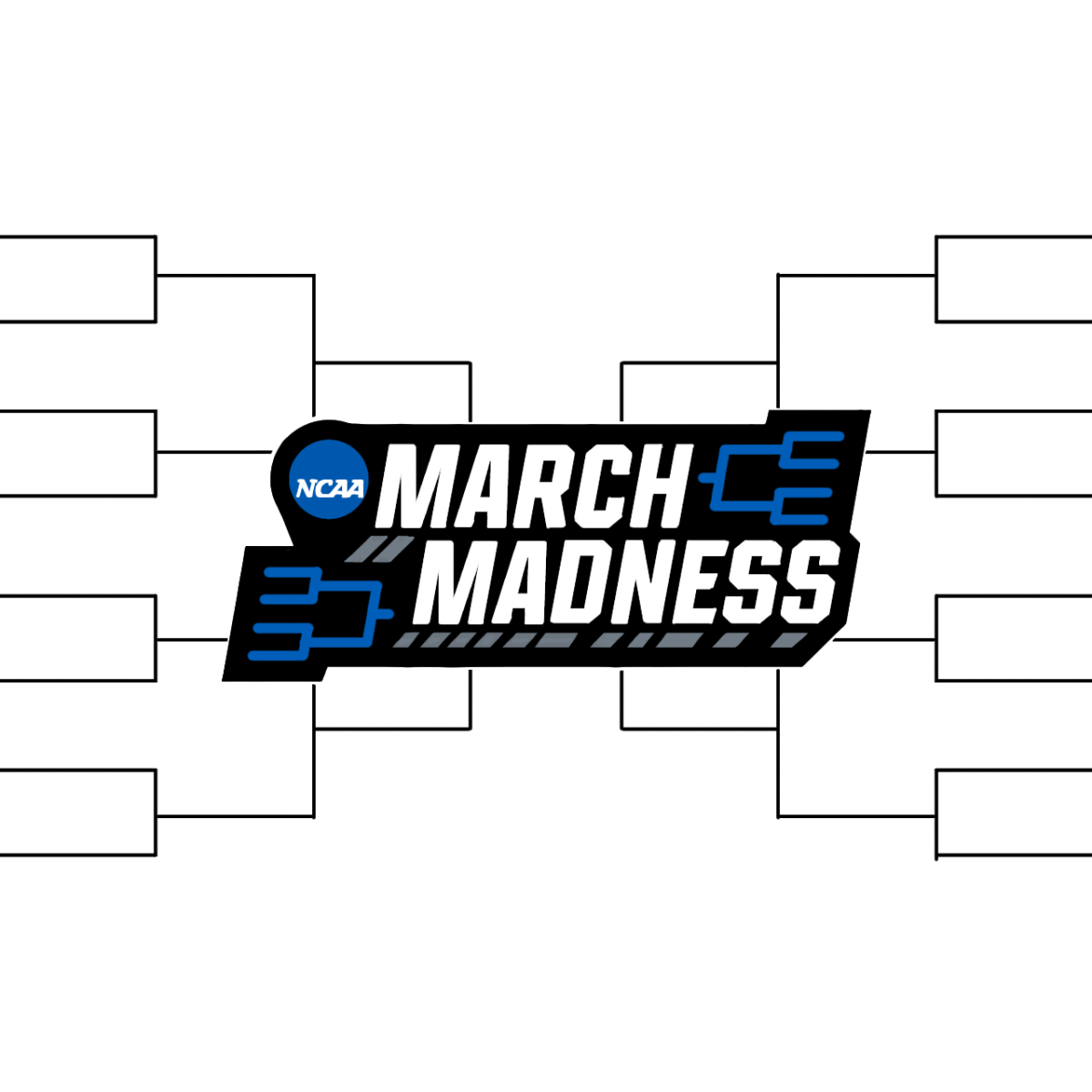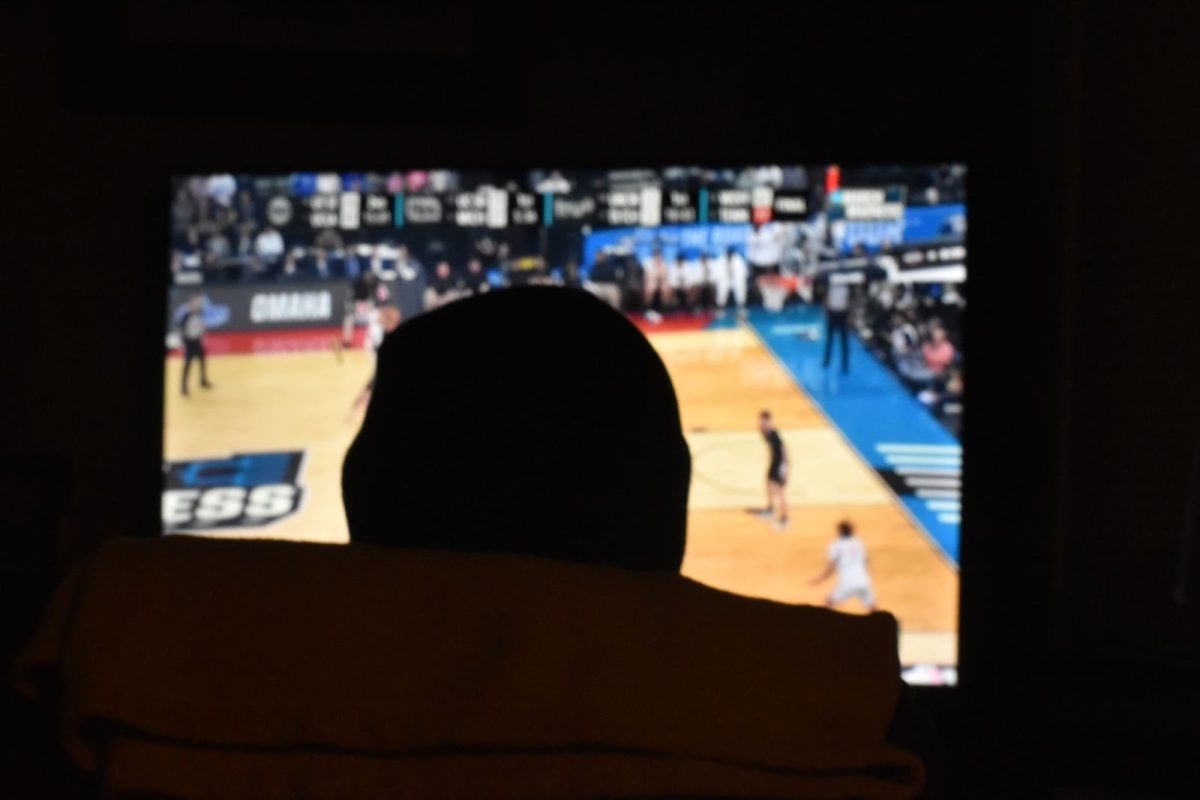Every March, college basketball fans look forward to the National Collegiate Athletic Association’s (NCAA) men’s basketball tournament, where they get to see if all the work their team has put into the season pays off. 72 collegiate teams are invited to the tournament each year. However, in order to actually win a national championship, a team will need to win six consecutive games in the tournament.
Franklin English Teacher Bryan Dykman, who’s a huge University of Kansas (KU) fan, explained why he thinks the Kansas Jayhawks were able to win the title in 2022: “First thing is they had three future National Basketball Association (NBA) players … Second, we picked up Remy Martin [from the transfer portal].” The transfer portal is a new opportunity added to college sports allowing players to go from one team to another during certain periods in the off-season. KU was able to use the talent they already had, and pick up an athlete that would help fill in a couple spots in the transfer portal from another team. A team who wants to win a national championship in today’s game has to have a good blend of both talent and experience to succeed.
The ways to earn a spot in the NCAA tournament are pretty simple, either you win your conference championship at the end of the season, or you make an “at-large” bid, where a committee votes your team in or out based on statistics like wins, losses, and the strength of a team’s regular season. At-large bids are never guaranteed, so the safest way a team can make the tournament is by winning their conference tournament.
The NCAA allows all conferences to compete in the tournament, which is very different from other sports like football. This gives smaller teams the opportunity to play in a championship even though their odds of winning aren’t very high. For some smaller schools, even getting into the tournament feels like winning a championship to them, and some even put their team and school on the map by knocking off lower seeded teams.
Once a team has been announced in the tournament, they will also receive a seed. The seeds are ranked from 1-16 based on what the NCAA committee believes the team’s skill level is. There are four of each seed, except for a few teams that get chosen to play an additional game to get into the tournament. Those teams are usually referred to as “bubble teams,” and are the last teams to be selected for March Madness. There are four regions in the bracket, with each region having 16 teams, ranked 1-16. The one-seed will play the sixteen-seed, the two-seed will play the fifteen-seed, and so on.
When smaller teams start big winning streaks in March Madness they’re often referred to as “Cinderellas,” and there have been lots of Cinderellas in past years that some people still remember today. Franklin student Josh Fajaro said, “The most memorable Cinderella team for me was the 2018 Loyola [University] Chicago when they got to the Final Four.” That run was so significant because at the time it was only the fourth time in history that an 11-seed made the Final Four. Other notable Cinderellas include Saint Peter’s University in 2022, Florida Gulf Coast University in 2013, and Oral Roberts University in 2021.
Another key piece of March Madness is the creation of brackets. People all across the country often fill out an NCAA tournament bracket in hopes of creating the first ever perfect bracket. Why has no one ever gotten a perfect bracket? Because there’s a one in 9.2 quintillion chance of one, according to the NCAA. However, this shouldn’t discourage you from filling a bracket out next year, as there’s a lot more to filling a bracket out than getting it perfect. It gives you more reasons to tune into some great college basketball games and perhaps compete with your friends and family over who made the best predictions.
Now that you’ve had some background on how March Madness works, let’s hop into what happened this year. For the first round of games, a new Cinderella was born with the University of Oakland (OU) who was a 14-seed, beating the University of Kentucky (U of K) who was a three-seed. OU was led by sixth year senior Jack Golche who made ten three pointers. U of K had tons of players projected to be drafted in this year’s NBA draft, but they were very inexperienced, with the majority of those players being underclassmen. This game was a prime example on how important experience is in the tournament. 13-seed Yale University was able to beat the four-seeded Auburn University in a back and forth battle.
Next up was the round of 32, with half the teams already eliminated. The round of 32 didn’t have many upsets, but that doesn’t mean there wasn’t excitement. One-seeded University of Houston was barely able to beat Texas A&M University in a game that was decided in overtime.
What’s better than one overtime? Two overtimes, and that’s what the three-seeded University of Creighton needed to stop the 11-seeded University of Oregon from upsetting them. There were lots of other really good games as well, but one thing that stood out to me was the amount of upsets this year compared to last year. Last year, by the second round, two one-seeds and two two-seeds were knocked out. By comparison, no one or two-seeds had been eliminated this year.
It didn’t take long for that streak to end though, as by the end of the “Sweet 16” or regional semifinal round, two one-seeds and three two-seeds were knocked out of the tournament. What all these upsets had in common was they were low scoring games, with five of the eight games in the Sweet 16 being decided by seven points or fewer. While higher seeded teams’ best players had a hard time scoring, it was cool to see how they relied on their whole team rather than just a few players.
Then, the “Elite 8” or regional finals occurred, signifying one more round before the highly anticipated Final Four. The defending champions — the University of Connecticut (UCONN) — were the first team to make it, with a dominating 30-0 run to start the second half, leading them to victory over the University of Illinois. The University of Alabama was able to hold off the University of Clemson in a back and forth match that went down to the wire. Last year’s John R. Wooden Award winner — an award given to the best player of the season — Zach Edey had a monster game putting up 40 points and 16 rebounds, and led Purdue University (PU) to their first Final Four since 1980. North Carolina State University (NCSU) was the last team to join with a second half domination against the prestigious Duke University.
At this point, the highest seeded team still alive was 11-seeded NCSU. NCSU’s success is a great example of how teams can still make the tournament, even after a bad regular season. NCSU ended the regular season with a record of 17-14. That’s nowhere near good enough to make the tournament as an at-large bid. However, thanks to their conference championship, they were able to go 5-0 beating off top-ranked teams to qualify for the tournament. Fast forward to now, they are going to their first Final Four since 1987.
At last was the well anticipated Final Four. The first game that took place was 11-seeded NCSU versus 1-seeded PU. The game started very slow, with not a lot of scoring from both teams, but PU was able to go into the half with a 35-29 lead. However PU was able to get out of that cold streak in the second half, while NCSU wasn’t. PU was able to end the Cinderella of NCSU with a large 63-50 victory, and punched their ticket to play in the national championship.
The second game was four-seeded University of Alabama (UA) versus one-seeded UCONN. Up to this point, UCONN was coming off a championship the previous season, and hadn’t lost a game by less than seventeen points. UA was an interesting matchup for UCONN, though, as they led the NCAA in points per game at 90.75 and played at a ridiculous pace. No team was able to gain space from each other in the first half; it felt like whenever one team made points the other one immediately responded with points of their own. The halftime score ended up being 44-40 in favor of UCONN.
Throughout the second half, UCONN was able to maintain a slight lead until UA was able to tie the game at 56 with 12:44 seconds left in the game. Then, UCONN’s center, Donovan Clingan, started to take over, showing his strength both offensively and defensively. At one point in the game, Clingan dunked the ball, then ran down the court and blocked a shot by UA, then ran back down and dunked it again. The final score ended up being 86-72 UCONN, and even though the score was not very close, the game felt closer watching it live.
The stage was set for the championship game. One-seeded UCONN was looking to be the first team to win back to back championships since 2007 while PU was looking to win their first ever national championship. The matchup everyone was looking forward to watching was Zach Edey versus Donovan Clingan, the battle of the bigs. The first half was very close, with no team sustaining a lead larger than seven points. Edey seemed unaffected by Clingan, and was able to score 16 points in the first half. However, UCONN was able to get an edge in three pointers, beating PU three to one in that category, contributing to the reason UCONN had a six point lead at halftime. However, Edey’s success slowed down in the second half as Clingan and UCONN were able to neutralize him, and no other PU players were able to step up and take the pressure off of him. UCONN had four players in double figures in points, and with key contributions from the whole team, were able to win back to back national championships with a 75-60 victory over PU.
UCONN Head Coach Dan Hurley was quoted in a press conference saying, “we [UCONN] make a hard tournament look easy.” Over the last two years, UCONN has appeared unbeatable and the team has shown resilience against all sorts of play styles. It will be interesting to see what teams do in the offseason to try and bring UCONN’s run to a stop.
This year’s tournament was a prime example on why March Madness is so fun to watch, from the thrilling upsets that keep fans on the edge of their seats to teams battling it out on the court. One game is all it takes to change the way your team is perceived — and that’s what makes March Madness, March Madness.



